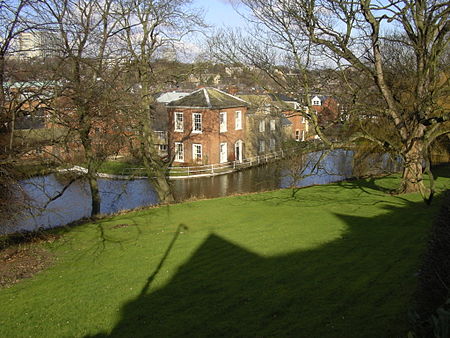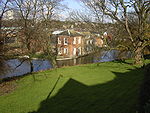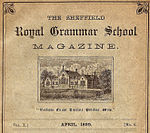Sharrow

Sharrow is a suburb of Sheffield located directly southwest of Sheffield city centre. The district lies within the Nether Edge and Sharrow ward of the City. Sharrow Ward's back to back terraced housing in Little Sheffield was redeveloped in the 1970s to provide modern, high density accommodation for the area's working class population. During the 1980s, cultural, economic and social tensions contributed to a general decline of the district. With the economic resurgence of Sheffield in the late 1990s, Sharrow has benefited from considerable inward investment both in improved housing stock and through development of local initiatives such as the small business enterprise unit at Sheffield United F.C.'s Bramall Lane ground in nearby Highfield. Until June 2004 Sharrow was also the name given to one of Sheffield's electoral wards which included Sharrow proper and a number of surrounding districts. This diverse ward contained 17,897 people in the 2001 UK Census subdivided as follows: White: 69.0% Asian: 16.3% Black: 7.5% Chinese or other: 4.2% Mixed: 3.0%This diversity is celebrated by some with the Sharrow Festival, a multi-cultural, multi-arts event showcasing local talent and fostering a spirit of pride in the local community. The annual Sharrow Lantern Carnival is the other cultural highlight in the area, and is held in April.
Excerpt from the Wikipedia article Sharrow (License: CC BY-SA 3.0, Authors, Images).Sharrow
Sharrow Lane Roundabout, Sheffield Nether Edge
Geographical coordinates (GPS) Address Nearby Places Show on map
Geographical coordinates (GPS)
| Latitude | Longitude |
|---|---|
| N 53.36716 ° | E -1.48885 ° |
Address
Sharrow Lane Roundabout
Sharrow Lane Roundabout
Sheffield, Nether Edge
England, United Kingdom
Open on Google Maps










